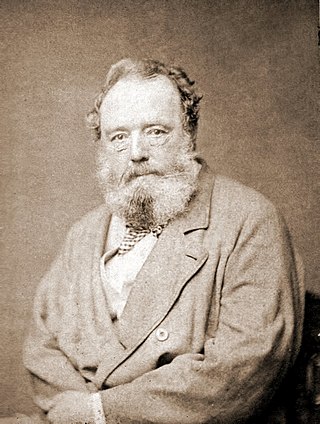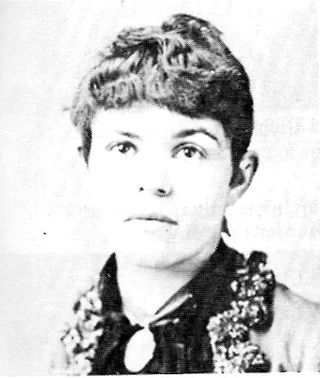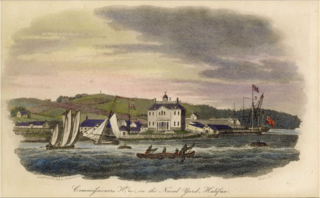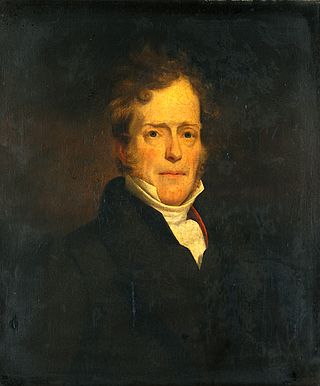Related Research Articles

Sir George Gilbert Scott, largely known as Sir Gilbert Scott, was a prolific English Gothic Revival architect, chiefly associated with the design, building and renovation of churches and cathedrals, although he started his career as a leading designer of workhouses. Over 800 buildings were designed or altered by him.

The Dean Cemetery is a historically important Victorian cemetery north of the Dean Village, west of Edinburgh city centre, in Scotland. It lies between Queensferry Road and the Water of Leith, bounded on its east side by Dean Path and on its west by the Dean Gallery. A 20th-century extension lies detached from the main cemetery to the north of Ravelston Terrace. The main cemetery is accessible through the main gate on its east side, through a "grace and favour" access door from the grounds of Dean Gallery and from Ravelston Terrace. The modern extension is only accessible at the junction of Dean Path and Queensferry Road.
William John Conybeare was an English vicar, essayist and novelist.

Edwin Lankester FRS, FRMS, MRCS was an English surgeon and naturalist who made a major contribution to the control of cholera in London: he was the first public analyst in England.

The Pimlico Mystery or the Pimlico Poisoning Mystery is the name given to the circumstances surrounding the 1886 death of Thomas Edwin Bartlett, possibly at the hands of his wife, Adelaide Blanche Bartlett, in the Pimlico district of London. A fatal quantity of chloroform was found in Mr Bartlett's stomach, despite having not caused any damage to his throat or windpipe, and no evidence of how it got there. Adelaide Bartlett was tried for her husband's murder and was acquitted. By the jury's own statement in court Mrs Bartlett's acquittal was partly secured because the prosecution could not prove how Mrs Bartlett could have committed the crime.

The Royal Entomological Society is devoted to the study of insects. Its aims are to disseminate information about insects and improving communication between entomologists.

Thomas Alexander Tefft was an American architect, from Providence, Rhode Island. Tefft, one of the nation's first professionally trained architects, is considered a master of Rundbogenstil and a leading American proponent of its use. Prior to his untimely death, Tefft "offered the most advanced designs of [his] day in America"

William Henry Duncan, also known as Doctor Duncan, was an English doctor who worked in Liverpool as its first Medical Officer of Health.

Royal Naval Dockyard, Halifax was a Royal Navy base in Halifax, Nova Scotia. Established in 1759, the Halifax Yard served as the headquarters for the Royal Navy's North American Station for sixty years, starting with the Seven Years' War. The Royal Navy continued to operate the station until it was closed in 1905. The station was sold to Canada in 1907 becoming His Majesty's Canadian Dockyard, a function it still serves today as part of CFB Halifax.
Events from the year 1847 in the United Kingdom.

Sir John Simon was an English pathologist, surgeon and public health officer. He was the first Chief Medical Officer for Her Majesty's Government from 1855–1876.

The Broad Street cholera outbreak was a severe outbreak of cholera that occurred in 1854 near Broad Street in Soho, London, England, and occurred during the 1846–1860 cholera pandemic happening worldwide. This outbreak, which killed 616 people, is best known for the physician John Snow's study of its causes and his hypothesis that germ-contaminated water was the source of cholera, rather than particles in the air. This discovery came to influence public health and the construction of improved sanitation facilities beginning in the mid-19th century. Later, the term "focus of infection" started to be used to describe sites, such as the Broad Street pump, in which conditions are favourable for transmission of an infection. Snow's endeavour to find the cause of the transmission of cholera caused him to unknowingly create a double-blind experiment.

The Medical Society of London is one of the oldest surviving medical societies in the United Kingdom.

John Thomas Quekett was an English microscopist and histologist.

James Newlands was a Scottish civil engineer who worked in Liverpool as the first Borough Engineer appointed in the United Kingdom. He is credited with designing and implementing the first integrated sewerage system in the world in 1848. His new sewerage system prevented raw sewage from contaminating drinking water thereby reducing the number of deaths caused by cholera and other water-borne diseases.
George Cooke Attfield was an English medical practitioner and first-class cricketer.

John Robert Hume (c.1781–1857) was a Scottish surgeon and physician. He is cited as an example of a 19th-century medical career that arrived at a high position in the profession, without early qualifications.
References
- 1 2 3 4 Anne Hardy (2003). "Public health and the expert: the London Medical Officers of Health, 1856–1900". Government and Expertise: Specialists, Administrators and Professionals. ISBN 0-521-53450-X.
- ↑ Michael Pacione (2001). The City: Critical Concepts in the Social Sciences. p. 47. ISBN 0-415-25270-9.
- ↑ Simon Szreter, Richard Smith (1996). Fertility, Class and Gender in Britain, 1860-1940. p. 90. ISBN 0-521-52868-2.
- ↑ English, Mary P. (1990). English, M.P. 1990. Victorian values. The life and times of Dr. Edwin Lankester, M.D., F.R.S. ISBN 0-948737-14-X.